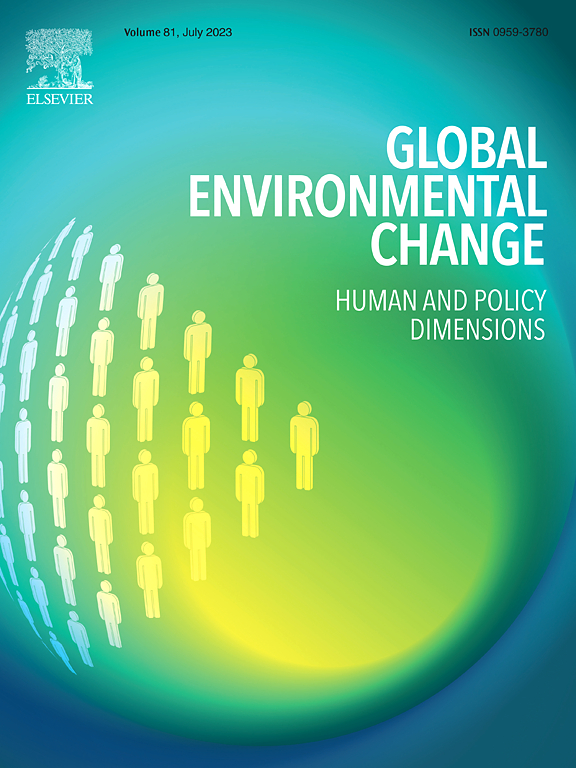与野火共存,培养管理框架
IF 9.1
1区 环境科学与生态学
Q1 ENVIRONMENTAL SCIENCES
引用次数: 0
摘要
山地流域基于地点的管理可以在应对和帮助减轻不同类型的景观灾害(包括野火和火灾后洪水)方面发挥重要作用。在一个野火更加极端的世界里,生活在火灾中意味着什么?在火灾发生多年后,火灾对整个司法管辖区的人们和地方的影响是什么?通过两年多的人种学田野调查,包括参与者观察和访谈,我在科罗拉多州北部的波德雷峡谷的特殊地理和土地使用背景下探索了这个问题。山区社区的当地管理实践可以使火灾范围以外的人口受益。这些可能植根于与土地、地方、以志愿者为基础的减灾和应急反应以及火灾后的合作努力之间的持续关系。使用叙事分析,我研究了如何定义有火灾风险的景观,如何将野火风险传达给生活在科罗拉多州这些景观中的人们,以及风险和责任的话语如何促进或限制对极端火灾的适应。我鼓励一种风险沟通的方法,将那些生活在适应火灾的景观中的人概念化为潜在的管理者。我还建议,减少野火风险的努力应该在地理和社会上更加广泛,要承认与野火及其相关的烟雾和洪水危害作斗争是一个全社会的挑战,而不仅仅是那些生活在适应火灾的景观中的人。与火共存是一个过程,社区成员、从业者和科学家们都在重新定位一个有更多极端野火的世界。本文章由计算机程序翻译,如有差异,请以英文原文为准。
Living with wildfire cultivating a stewardship framework
Place-based stewardship in mountain watersheds can play an important role in responding to and helping to mitigate different kinds of landscape-based hazards, including wildfire and post-fire flooding. In a world with more extreme wildfire, what does it mean to live with fire, where the impacts affect people and places across jurisdictions for many years after the fire itself? Drawing on over two years of ethnographic fieldwork including participant observation and interviews, I explore this question in the particular geographic and land use context of the Poudre Canyon in northern Colorado. Local stewardship practices in mountain communities can benefit populations beyond the fire perimeter. These may be rooted in ongoing relationships to the land, local, volunteer-based hazard mitigation and emergency response, and post-fire collaborative efforts. Using narrative analysis, I examine how landscapes at risk of fire are defined, how wildfire risk is communicated to those living in these landscapes in Colorado, and how discourses of risk and responsibility facilitate or constrain adaptation to living with extreme fire. I encourage an approach to risk communication that conceptualizes those who live in fire adapted landscapes as potential stewards. I also suggest that wildfire risk reduction efforts should be more geographically and socially expansive, to acknowledge that contending with wildfire and its associated hazards of smoke and flooding is a society-wide challenge, not just for those living in fire adapted landscapes. Living with fire is a process, and community members, practitioners, and scientists alike are reorienting toward a world with more extreme wildfire.
求助全文
通过发布文献求助,成功后即可免费获取论文全文。
去求助
来源期刊

Global Environmental Change
环境科学-环境科学
CiteScore
18.20
自引率
2.20%
发文量
146
审稿时长
12 months
期刊介绍:
Global Environmental Change is a prestigious international journal that publishes articles of high quality, both theoretically and empirically rigorous. The journal aims to contribute to the understanding of global environmental change from the perspectives of human and policy dimensions. Specifically, it considers global environmental change as the result of processes occurring at the local level, but with wide-ranging impacts on various spatial, temporal, and socio-political scales.
In terms of content, the journal seeks articles with a strong social science component. This includes research that examines the societal drivers and consequences of environmental change, as well as social and policy processes that aim to address these challenges. While the journal covers a broad range of topics, including biodiversity and ecosystem services, climate, coasts, food systems, land use and land cover, oceans, urban areas, and water resources, it also welcomes contributions that investigate the drivers, consequences, and management of other areas affected by environmental change.
Overall, Global Environmental Change encourages research that deepens our understanding of the complex interactions between human activities and the environment, with the goal of informing policy and decision-making.
 求助内容:
求助内容: 应助结果提醒方式:
应助结果提醒方式:


